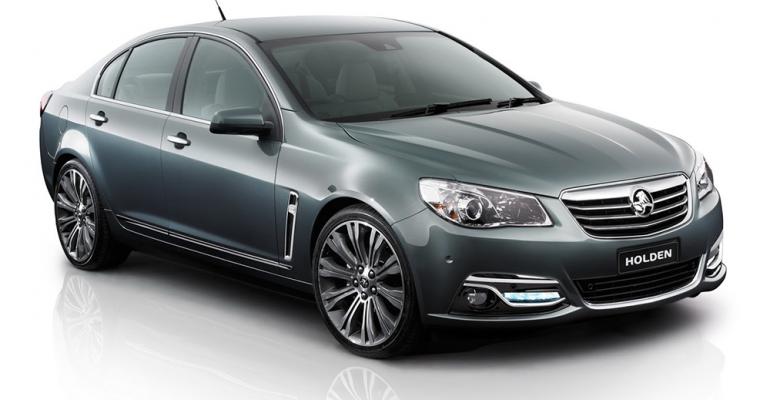A new survey of Australian vehicle-buying intentions shows just why local manufacturing has no future Down Under.
Roy Morgan Research says back in 2003 more than one in four Australians planning to buy a new car in the next four years intended to get a locally manufactured model.
“Ten years on, and that Aussie-made intention has more than halved to around one in eight new-car buyers,” the research company says in a statement.
Ford is ending vehicle production in Australia by 2016. GM Holden and Toyota will do the same in 2017.
Meantime, Roy Morgan Research says the Holden Commodore remains the most popular locally made car with 4% of all new-car intenders putting the model, or one of its variants, on top of their to-buy list.
GM Holden’s Cruze is the second-most-sought-after locally made car (2.4%), overtaking Toyota’s Camry/Vienta (2.1%) for the first time, although the Camry Hybrid scores an additional 0.8% of the market.
In 2003, 7.3% of buyers named the Ford Falcon/Fairmont/G-Series as the new car they planned to buy, but by last year this had fallen to just 1.7%.
Despite Australians’ growing penchant for SUVs, the 1.3% intending to buy a Ford Territory is the model’s lowest result since 2009.
The decline in intention to buy Australian-made cars largely is due to a drop in popularity of the types of cars made in the country, Roy Morgan Research Automotive Account Director Jordan Pakes says.
Large cars were most popular in 2003 with more than 26% of the market wanting a model from this segment, well ahead of small cars at 16.5% and compact SUVs at 8.3%.
Today, those wanting a large car have shrunk to 7.6% of the total new-car market, behind small and medium cars and medium and large SUVs.
“Over the last 10 years, Australian car-buying preferences have changed substantially – with the small-car market in Australia now clearly the dominant segment,” Pakes says, adding one in four new-car buyers are considering a model from this class.
“SUVs are also taking share from the once-dominant large-car segment, with more than 20% of buyers now after either a medium or large SUV.
Pakes says one important factor influencing the shift in preference is the sheer increase in options for Australians.
“The number of brands available has risen almost 25% since 2003…and many makes also are boosting their model lists,” he says.
An Australian new-car buyer now chooses from more than 350 vehicles.
“The strong Australian dollar, decreasing import tariffs and Australians’ appetite for new cars is making our market more attractive to importers than ever before,” Pakes says.
“When combining the increase in choice, changing vehicle preferences, higher local labor costs, strong Australia dollar, increasing petrol prices and decreased tariff protection, it is not surprising to see the gradual demise of the locally built large car.”
Pakes says from a consumer perspective, the end of the local automotive industry actually could result in new cars becoming more affordable.
“About 690,000 new cars sold in Australia last year were hit with the import tariff,” he says. “But with no local car industry to protect, the government may not be able to justify tariffs.
“That could save car importers a combined A$1 billion-plus ($906.6 million) per annum in fees, potentially available to be passed on to Australian consumers.”





